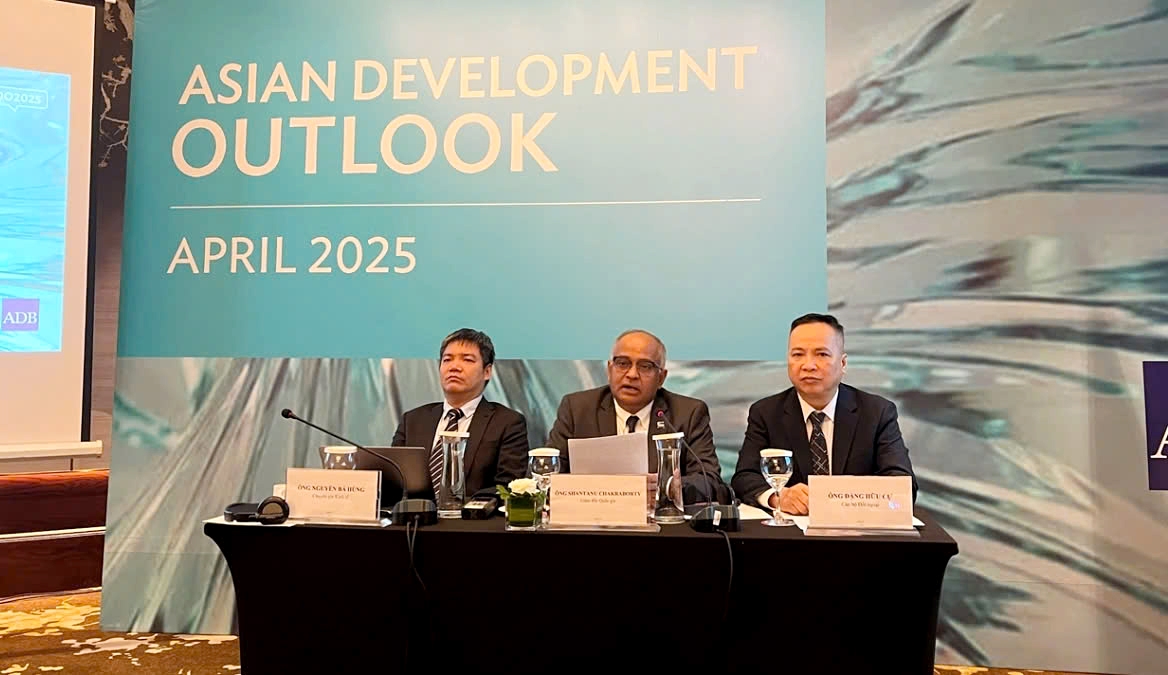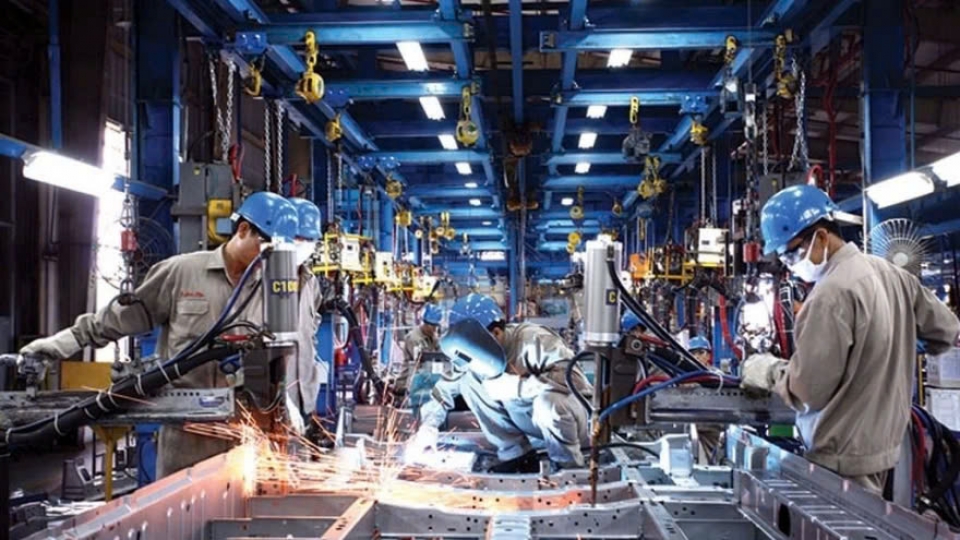Vietnamese economy gathers steam ahead of global challenges, says ADB
VOV.VN - Vietnam’s economy is forecast to grow at 6.6% and 6.5% in 2025 and 2026, respectively, following a robust 7.1% growth last year, according to the Asian Development Bank (ADB)’s flagship annual economic publication released on April 9.

While maintaining a positive outlook for Vietnam this year and next, the Asian Development Outlook April 2025 highlighted risks to the forecasts, which were finalized before the announcement of US tariff measures.
“Strong trade, a recovery in export manufacturing, and robust foreign direct investment fueled Vietnam’s economic growth in 2024”, said ADB Country Director for Vietnam Shantanu Chakraborty at a press briefing on April 9. “However, recent US announcements on tariffs, along with other continued global uncertainties, could pose significant challenges to the country’s growth this year.”
Meanwhile, Nguyen Ba Hung, the Chief Economist of the ADB Vietnam, explained the economic outlook is facing high uncertainty, and caution is needed when considering the risks of trade tariffs. The period of 2025-2026 may rely on the momentum from FDI investment. However, this factor, qualitatively, may be influenced by US tariffs.
In his view, investors naturally are likely to halt and wait, with no new decisions made, and this move itself will affect the implementation of FDI disbursement in Vietnam.
The evolving global economic environment, significantly affected by recent tariff-related announcements by the US and geopolitical tensions, is posing significant challenges for economies dependent on export-driven manufacturing. External uncertainties, such as tariff escalations, reciprocal measures, the prolonged military conflict in Ukraine, and ongoing instability in the Middle East could constrain near- to medium-term global economic growth. Moreover, a slowdown in the US and China, that are Vietnam’s major trading partners, could further affect economic prospects.
“The Government of Vietnam has initiated an ambitious plan to boost growth, which can help mitigate the significant external risks,” Chakraborty added. “Higher and sustainable economic growth is possible if ongoing, extensive institutional reforms are implemented swiftly and efficiently. Such reforms would stimulate domestic demand, increase governance efficiency in the near term, and consequently promote private sector development over the medium and long term.”
According to the Asian Development Outlook April 2025, enhancing Vietnam's participation in global supply chains is a critical policy challenge for the country’s development. As global economic dynamics evolve, Vietnam’s advantages in value addition to global supply chains are also shifting. It is important to understand the limitations and challenges associated with broadening its participation in and increasing its added values to global supply chains, to improve the country's economic trajectory and long-term growth potential.






